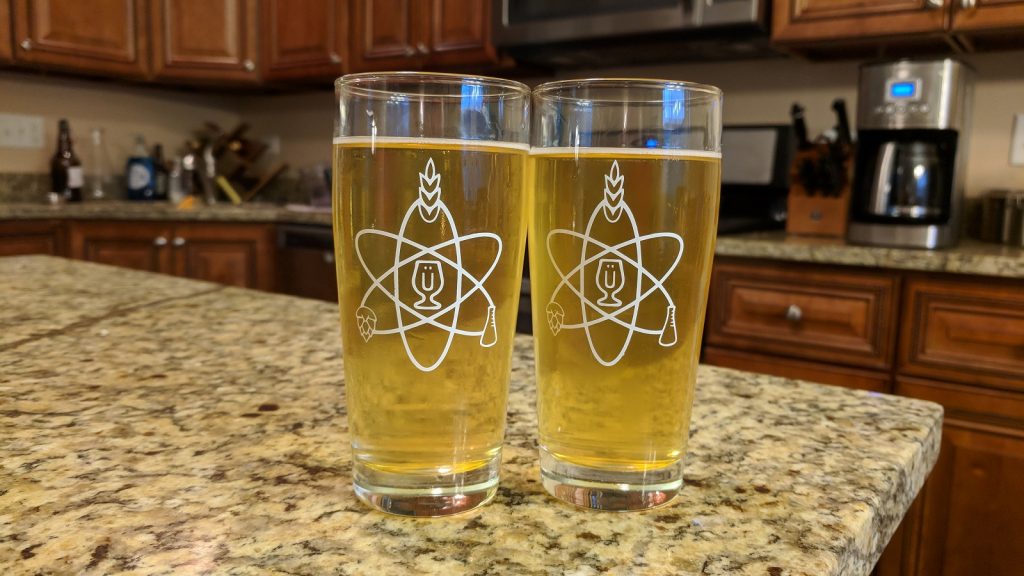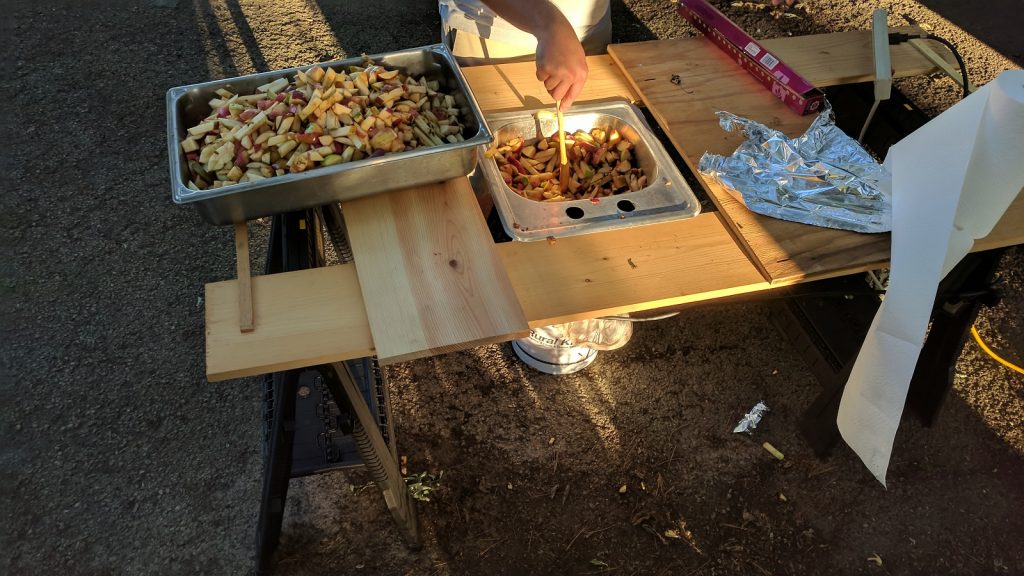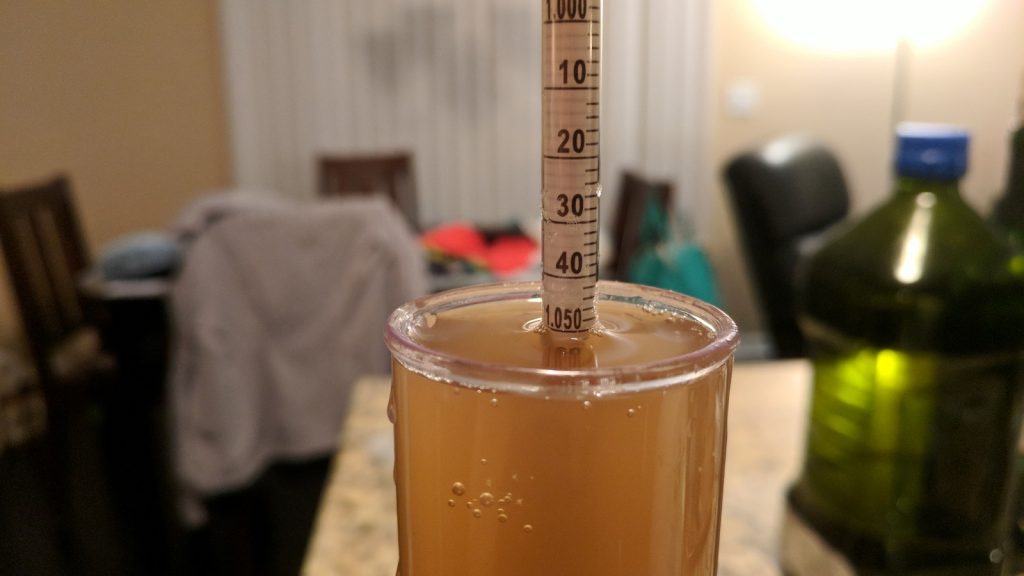Author: Matt Del Fiacco
Traditionally, hard cider was naturally fermented by the yeast present on the apple skins at juicing. However, many modern cider makers choose to pasteurize the juice before pitching pure yeast cultures, as it affords them greater control over the finished product. Two of the most common methods of pasteurization include treatment with either chemicals, specifically potassium or sodium metabisulfite, or heat. Technically, treating juice with chemicals isn’t pasteurization, but rather an alternative process that inhibits the wild yeasts and bacteria naturally present in fresh pressed juice. Holding juice at a specific temperature for a certain amount of time will fully eliminate those same yeast and bacteria, thereby pasteurizing the juice.
Both methods have their pros and cons. For example, in addition to the gear and energy requirements, many believe heat pasteurization drives off volatile aromatic compounds that leads to a “cooked apple” flavor. While dosing juice with a relatively small amount of cheap powder may negate the need for heating equipment, the effectiveness of this method is dependent on the pH of the juice, which isn’t an issue with heat. Moreover, some individuals are very sensitive to sulfites, especially those with asthma, excluding chemical pasteurization as an option.
One of my favorite days of the year is when I get to set up shop outside my family member’s house and press all of the apples that haven’t been turned into apple sauce, apple chips, or apple pie. After pressing the apples, I often struggle with how to go about inhibiting the wild yeast and bacteria present. While I am concerned about the potential flavor impact and aroma loss due to the use of heat, I’m also skeptical of the use of sulfites due to the potential flavor impact. Eager to be able to plan more effectively in the future, I offered up my lot of a season’s worth of fresh pressed apple juice to test it out for myself!
| PURPOSE |
To evaluate the differences between hard ciders made with juice pasteurized with either chemical (potassium metabisulfite) or heat.
| METHODS |
I opted to make a dry, pétillant, traditional cider using a clean lager yeast that I have had good experiences with in the past.
A Pressing Situation
Recipe Details
| Batch Size | Boil Time | IBU | SRM | Est. OG | Est. FG | ABV |
|---|---|---|---|---|---|---|
| 4 gal | 0 min | 0.0 IBUs | 9.8 SRM | 1.050 | 0.997 | 7.0 % |
| Actuals | 1.05 | 0.997 | 7.0 % | |||
Fermentables
| Name | Amount | % |
|---|---|---|
| Fresh Pressed Apple Juice | 35.067 lbs | 100 |
Yeast
| Name | Lab | Attenuation | Temperature |
|---|---|---|---|
| SafLager German Lager (S-189) | DCL/Fermentis | 73% | 48°F - 56°F |
Download
| Download this recipe's BeerXML file |
I always prep for apple pressing a few days ahead of time by getting the materials out of storage and giving it all a thorough cleaning. Come juicing day, the apples are gathered, washed, and quartered by hand, after which we run the chunks through a purpose-purchased garbage disposal and gather the resulting decimated apple mash in a bucket lined with a Brew Bag fabric filter.
The apple filled Brew Bag is then moved to the cider press and the juice is collected in a sanitized bucket. The bees were plentiful this year and drawn to the juice, so we kept the bucket covered between pressings.
At the end of pressing, I found myself with 8 gallons of apple juice. I took a hydrometer reading that revealed the juice was right at 1.050 OG, similar to many commercially available apple juices.
For this experiment, I went with the general rule-of-thumb to use 1 Campden tablet per gallon of juice, which amounts to a sulfite addition of roughly 50 ppm per gallon. After racking half of the juice to a sanitized fermentation keg, I dissolved the ground Campden in a small amount of juice and tossed it into the filled fermentor.
For the pasteurization of apple juice, the FDA recommends a temperature of 160°F/71°C for at least 6 seconds, though based on recommendations from other cider makers, these numbers seem to be bare minimums. Wanting to ensure the job was done completely, especially considering the copious amounts of wild yeast and bacteria on the apples, I brought the juice up to 180°F/82°C, shut off the heat, and let it sit covered for 5 minutes.
I then racked the heat pasteurized batch into an identical fermentor and let both kegs sit at 60°F/16°C for 24 hours while the Campden did its work. I rehydrated a sachet of yeast with Go-Ferm for each batch before pitching.
The ciders were allowed to ferment at 60°F/16°C in my temperature controlled chamber.
After a month of fermentation, I racked each batch of cider into its own serving keg and allowed them to age at 68°F/20°C for approximately 6 months. Hydrometer measurements at this point showed the cider treated with chemicals had attenuated ever so slightly more than the heat pasteurized batch.

The filled kegs were put in my kegerator where they were chilled and carbonated to my desired level, after which they were ready to serve to participants!

| RESULTS |
A total of 21 people of varying levels of experience participated in this experiment. Each participant was served 1 sample of the cider treated with potassium metabisulfite (Campden) and 2 samples of the heat pasteurized cider in different colored opaque cups then asked to identify the unique sample. At this sample size, 12 tasters (p<0.05) would have had to identify the unique sample in order to reach statistical significance, though only 8 (p=0.40) made the accurate selection. These results indicate participants in this experiment were unable to reliably distinguish a cider made with fresh pressed juice treated with chemicals from one pasteurized with heat.
My Impressions: Out of the 5 semi-blind triangle tests I attempted, I chose the different sample only once. Both ciders had a deceptively sweet aroma reminiscent of apple peels and white wine, while the flavor was quite dry and crisp on the palate. If there was a loss of character to the heat pasteurization, or an altering of flavor due to the sulfite addition, I was unable to tell. And that’s a good thing, because I loved these ciders!
| DISCUSSION |
The pasteurization of fresh pressed juice is a method used by cider makers to ensure a consistent and predictable finished product. As with most things involving fermentation, opinions regarding the various methods of pasteurization abound, with some preferring chemical options while others opt for the more natural use of heat. The fact blind tasters in this experiment were unable to reliably tell apart ciders pasteurized using either method suggests the fears some hold of negative flavor impact may be for naught.
I have used both chemical and heat pasteurization when making cider from fresh pressed juice in the past, and both methods always seemed to work equally as well. Based on my experience with these ciders, I’ll be using potassium metabisulfite to inhibit wild yeast and bacteria in future batches, as it requires one less time consuming step. That said, it’s nice to know that heat pasteurization doesn’t seem to have the detrimental effects some claim, making it a fantastic option for those who have a sensitivity to sulfites or simply prefer a more natural process.
If you have any thoughts about this cider experiment, please do not hesitate to share in the comments section below!
Support Brülosophy In Style!
All designs are available in various colors and sizes on Amazon!
Follow Brülosophy on:
FACEBOOK | TWITTER | INSTAGRAM
If you enjoy this stuff and feel compelled to support Brülosophy, please check out the Support page for details on how you can very easily do so. Thanks!


















32 thoughts on “exBEERiment | Hard Cider: Chemical vs. Heat Pasteurization Of Fresh Pressed Juice”
Very interesting, it is almost time for pressing grapes.
My favorite time of year! I’ll be pressing apples again in about three weeks, I can’t wait.
Congrats on the win and thanks for sharing!
Many thanks! It was an overwhelming experience.
Thanks for the research and the article. Every video I watched used Camden. I had already heat pasteurized my mead and thought maybe I screwed it up. Glad to know there’s not much difference really.
What type of apples did you use?
Hey Paul,
This was a blend of wild apples, with some gala and pink lady apples thrown in. Unfortunately we aren’t too sure what kind of apples are on the property, I bet we could get them tested somehow.
Thank you for the article. I’m just about to make a Apple juice + melon cider so this came at just the right time.
A question though, do you usually condition the cider för 6 months?
Hey Stefan, thanks! I’ve never used melon in a cider, I’d be interested in hearing how that turns out!
For traditional ciders, without the use of concentrate for back-sweetening or other adjuncts, yeah I do. If I’m back-sweetening or using adjuncts that will dominate the flavor a bit more, it’s usually about a month or so of conditioning time.
For these ciders specifically, the yeast threw off MAD sulphur. So a lot of the conditioning time was just waiting it out until it dissipated. It was worth it.
Just curious as to which version was the medal winner?
Hey Jim!
There was a typo in the article that has since been fixed, but essentially neither. The medal winner was made from the same juice as these (same pressing) but was wild fermented, and didn’t contain any sulfites or utilize heat for pasteurization.
Though, I have read quite a bit about a minor use of sulfites in wild ferment ciders, just enough to suppress bacteria.
Just in time for our annual apple picking/pressing and cider making! Thanks!
As an alternative, and a question from someone who has never made a cider, what about just pitching a large starter of your preferred yeast and letting it “out compete” the native bugs?
I know quite a few people who do this with no ill effects! I don’t personally go this route, just because I don’t trust what would survive that process and shape the flavor if I wanted a really clean cider (like these).
I’m not very familiar with cider/wine production. If the campden tablets kill off all of the naturally occurring yeasts, why doesn’t the added yeast also get killed off? Is it neutralized by something else? Does it degenerate into a less yeast -harmful product over time?
Campden (sodium metabisulifte) and potassium metabisulfite generate SO2 gas in solution which kills wild bacteria and inhibits wild yeasts at typical doses (extremely high doses kill everything, but may leave off-flavors). Pre-treating juice with campden lets pitched yeasts take over the fermentation, especially when wine yeasts (highly SO2 resistant) are used. The general recommendation is to add campden and wait 24 hrs for the SO2 to offgass before pitching yeast to reduce SO2 inhibition of yeasts.
Great explanation, Thanks!
Good to see there’s seemingly not a difference. I’ve made mine from a local orchard that “flash pasteurizes” their cider and basically dumped it in a sanitized vessel, pitched yeast, and called it a day. I’ve always wondered if I should be getting unpasteurized and using campden tablets instead. My current process is just about as little work as possible (besides swiping my credit card and hauling 5 jugs home)… so I’ll keep doing it!
I have always wondered if UV light could be used to sterilize the new juice. Make a shallow trough that passes under a series of UV lamps and down which the newly pressed juice passes and is collected on the back side. One would need to do the math on power, UV spectrum attenuation, etc. to ensure the whole volume of flowing juice was adequately exposed, and for long enough. This method would require neither heat, nor a large amount of time, nor chemicals. Upfront costs may not even be that high, and less so if one were making cider year after year. No skunking would occur from no hops, unless of course apple juice itself has similar or equally destructive reaction with UV radiation.
I take it you’re not back sweetening, but if ever you do I’d love to see this repeated post fermentation.
I get that hearing a fermented cider will drive off some alcohol (not the worst thing when going from 1.050 to 1.000) but for the time it shouldn’t be significant.
These weren’t back-sweetened, I typically like my cider bone dry and lightly carbed.
I’d love to see that as well, great idea! I have a backlog of cider experiments, but I’ll add this to it.
Interesting, as always. I don’t do either and sometimes just use the wild yeast in the juice to ferment the cider. Even when pitching yeast I would forget, since it’s not something I do when brewing and cider is a once every few years thing. Then I realized it hadn’t made a difference, or at least a bad one. Some of the cider has sat in the bottle two or three years before being consumed and no nast anything has crept up.
If fermenting “au naturale” I just let the one gallon jugs sit at room temp till they start to balloon. Then knowing they are actively fermenting I pour them into a fermentor.
I suspect that hen pitching yeast the pitched yeast so far out numbers the native yeast that they just dominate but?
I’d assume you’re correct, and I know quite a few people who do what you do in terms of just hoping the big pitch will out-perform the native yeasts. I love a good wild ferment cider.
I found it interesting to know that my method of making cider can be much more simpler. Having only done the pasteurization method, I was taught to bring the juice up to 180f for 40mins. Thanks for cutting my time in half.
I have yet to taste a wine making method with my cider too. I was told to freeze my apples before juicing. The idea is that the freezing process breaks down the cell membrane and alows more sugar to be released for your yeast to eat.
Also the garbage disposal is genius! I never would have thought of that. I just used my parents vegetable juicer.
I would be interested to learn about post fermentation impact of heat. Potentially doing the same thing of chemical vs. heat, or maybe doing just heat vs. untreated. The idea being there that you would compare the product with only one variable, heat vs. no heat. Potentially doing the same with Chemical treatment. Just a thought.
I heat pasteurize my backsweetened cider, so would be interested in seeing if that may have a perceivable impact.
I’m glad you mentioned that pasteurizing the juice before pitching the yeast cultures allows for more control over the finished hard cider. I recently started drinking with a new group that knows a lot about alcohol, so I’ve been doing some research online about the different types and how they’re made. I didn’t know that most modern hard cider makers will pasteurize the juice first, so thanks for sharing that info here!
Thanks for the post, I’m about to press some apples to make my first cider. I only have K-Meta on hand, I didn’t really get what concentration of campdem you used. 50 ppm per gallon doesn’t sound right to me, ppm is equivalent to mg/l , what does the gallon mean?
Hey Fabio, here is an excellent article on the subject of sulfites in cider, and when you would use varying volumes based on how you want to ferment and the pH of the juice.
Thanks for doing this, Matt… about to press a few bushels and do a big batch of very similar cider, and although I’ve gotten away with not pasteurizing in the past and just using campden tablets… based on your experiment, I’m going to heat-pasteurize (mostly so I don’t have to worry about e. coli).
Thank you for your article. It answered a lot of questions I had regarding the prefermentation.
Thank you for the post!, i was researching about it and found this excelent articule, i’ll try the heat pasteurization.
Thanks for this careful and scientific study–with Statistics used correctly! Very helpful in my own beginning hard cider making!